Anatomy slides ch11 axial muscles not done
1/31
There's no tags or description
Looks like no tags are added yet.
Name | Mastery | Learn | Test | Matching | Spaced |
|---|
No study sessions yet.
32 Terms
5 groups of axial muscles
head and neck
vertebral colums
respiration
abdominal wall
pelvic floor
axial attatchment vs appendicular attachment
axial- superior and inferior
appendicular- proximal and distal
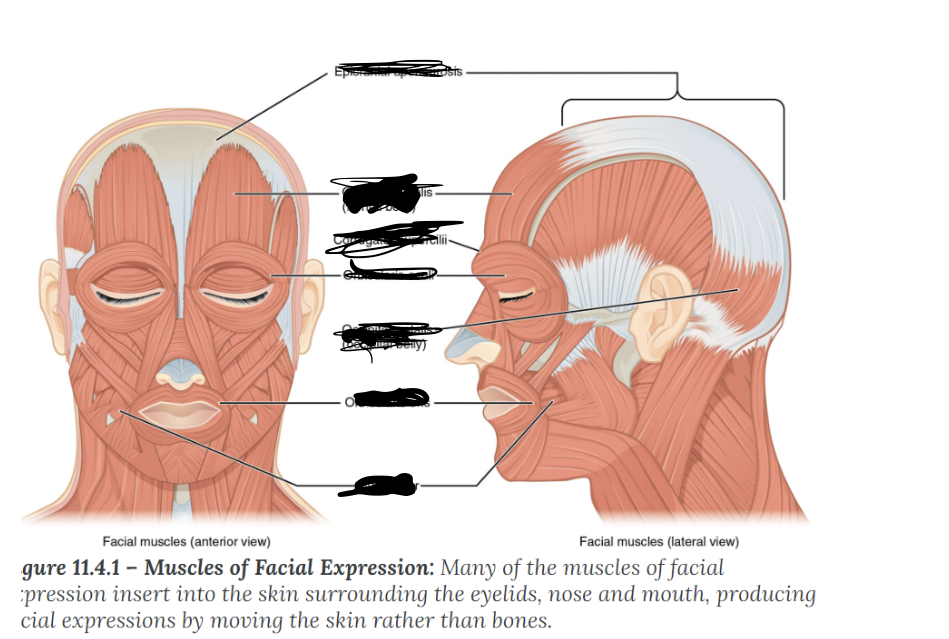
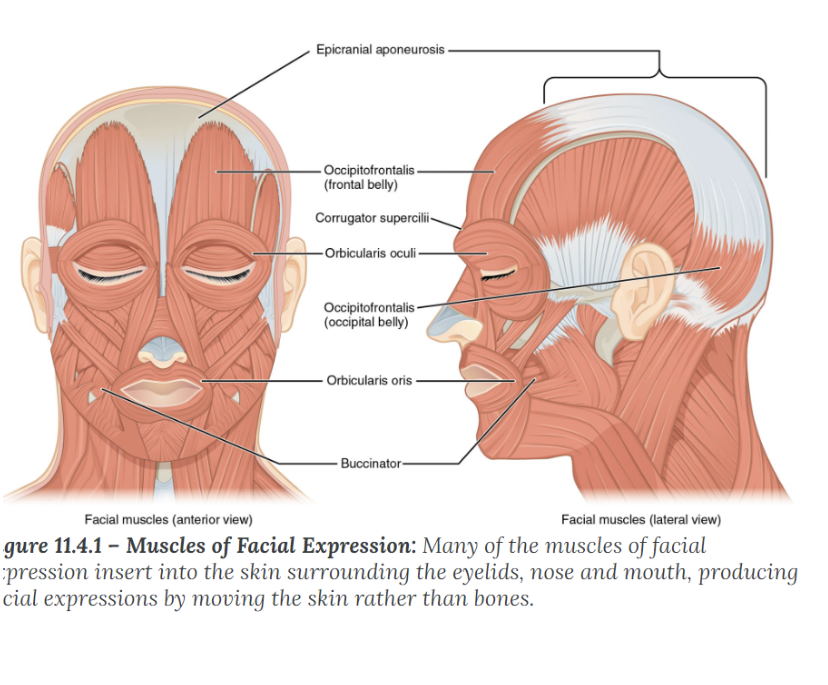
raise eyebrows
activated occipitofrontalis
retract scalp
occipital side of occipitofrontalis
pull eyebrows together
corogator supercili
wink blink squint
orbiularis oris
close and open eyes
levator palpebrae superioris
flare nostrils
nasalis
wrinkle nose
procerus
pucker for a kiss
orbicularis oris
pull lower lip inferiorly (down)
depressor labii inferioris
frown
depressor anguli oris
pull upper lip superiorly (up)
levator labii superioris
pull corners of mouth superiorly and laterally (up and out)
levator labii supeioris
smile
levator anguli oris
closed mouth smile
risorius
pout
mentalis
tense skin of neck, pull lips down
platysma
6 eye muscles
superior, inferior, medial, lateral rectus, inferior and superior obliques
face muscles
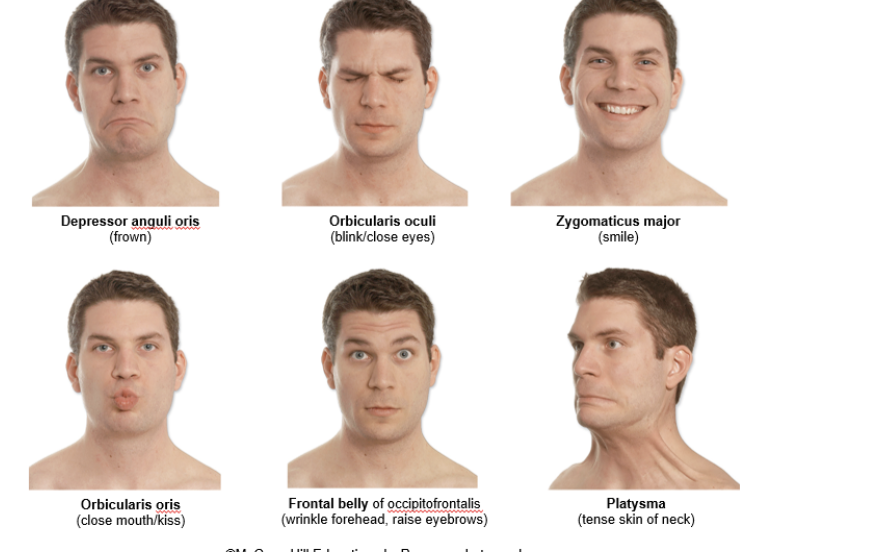
eye muscles lateral view
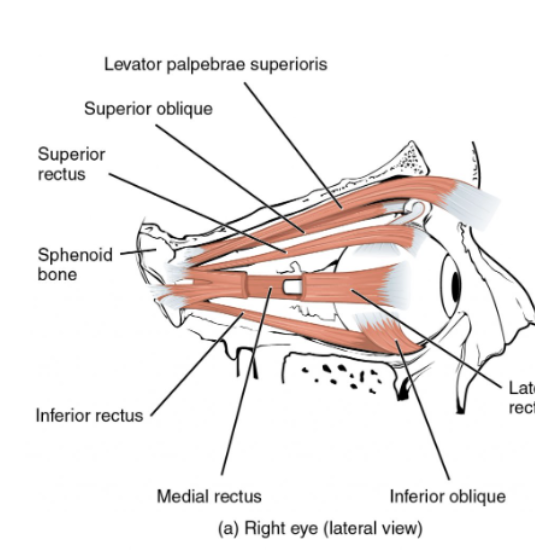
eye muscles anterior view right eye
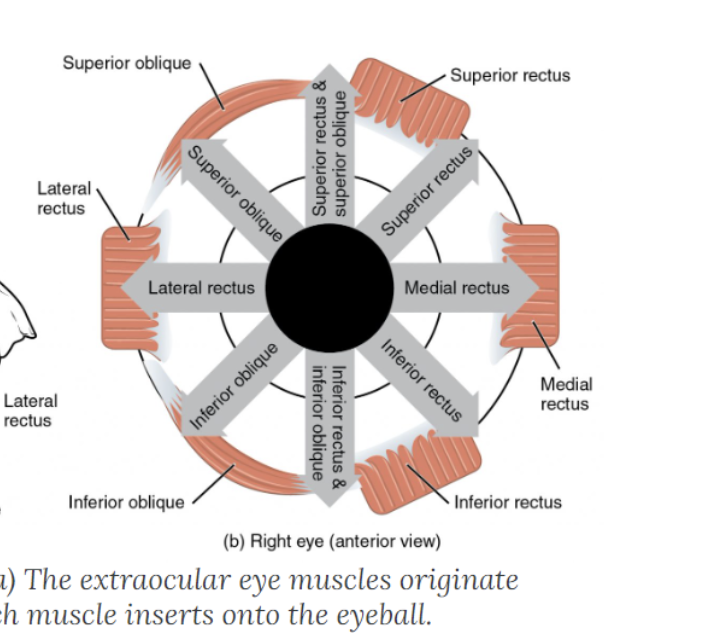
mastication
chewing
temporalis
elevates ands retracts mandible
masseter
elevates and protracts
lateral and medial pterygoid
protract and move mandible from side to side
what is the tongue used for
speech, food placement for chewing and swallowing, it is comprised extrinsic and instrinsic muscles
what muscles initiate chewing
masseter and temporalis
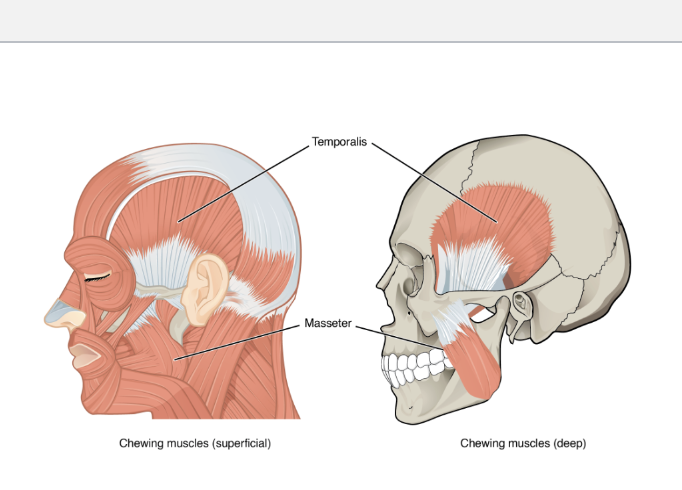
muscles that lower the jaw
medial and lateral pterygoid
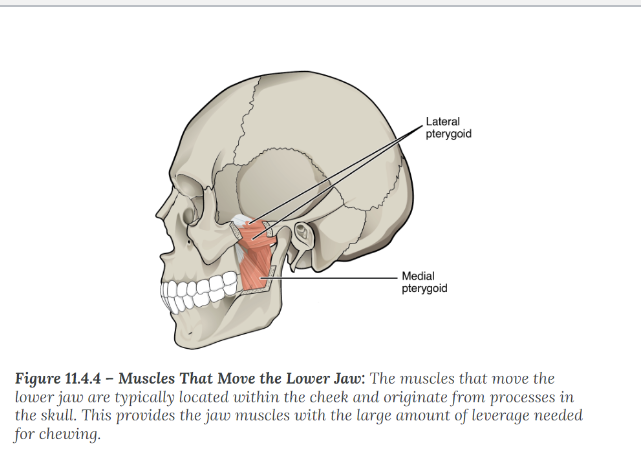
where are the muscles that move the neck and head attached
vertebral column, thoracic cage, pectoral girdle and the bones of the cranium